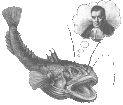UW Aquatic & Fishery Sciences Quantitative Seminar
Jan Ohlberger
School of Aquatic and Fishery Sciences, University of Washington
Inferring global and regional effects on spatial population coherence: a case study of Alaskan Chinook salmon
Abstract
Average returns of Chinook salmon (Oncorhynchus tshawytscha) to Alaskan rivers have declined dramatically during the most recent decade, causing hardship to many people that heavily rely on this resource. In the Arctic-Yukon-Kuskokwim (AYK) region declines have led to closures of commercial fisheries and limitations to subsistence harvests. In this study, we aimed at understanding how Chinook populations respond to environmental drivers by characterizing temporal coherence in productivity dynamics and by parsing the effects of local drivers of population dynamics from regional and global drivers that are shared among populations. Management actions that typically occur locally would benefit greatly from being able to distinguish these effects operating at different spatial scales. We applied Dynamic Factor Analysis (DFA), a dimension reduction technique designed for multivariate time series analysis, to a dataset of productivity time series from 15 Chinook salmon populations covering a broad geographical range in the eastern North Pacific Ocean. We find that productivity dynamics of Chinook populations strongly covary at the regional scale, and to some extent throughout Alaska. The timing of river ice break-up was identified as an important driver of regional productivity dynamics, whereas broad-scale variability in population productivity was most strongly linked to the North Pacific Gyre Oscillation (NPGO), a dominant pattern of sea surface height variability in the Northeast Pacific. Our results further suggest that populations within regions do not respond consistently to the same climate variables, suggesting intraspecific variation in population responses to the same environmental drivers.

